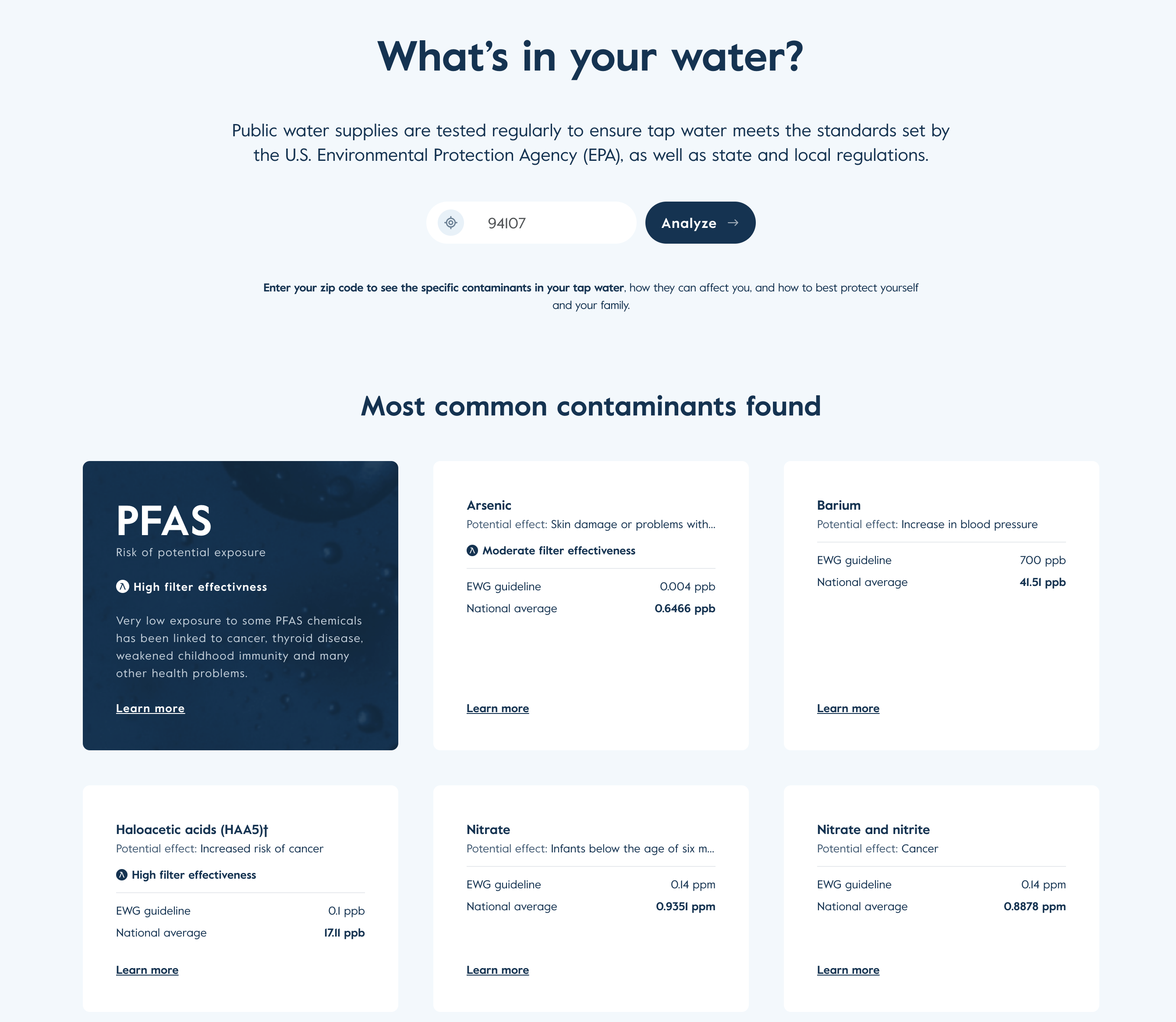We are excited to announce the launch of our new water quality database, designed to provide users with the most comprehensive view of their home tap water. This innovative database combines information from the Environmental Working Group (EWG) and the Environmental Protection Agency (EPA) to offer a single, easy-to-access resource for water quality information.
Source of Data
What sets our water quality database apart is its integration of water quality data from multiple authoritative sources, ensuring a complete and detailed picture of water quality across the United States.
EWG’s Tap Water Database: Established in 2003, this extensive database includes data on drinking water quality for around 50,000 community water systems nationwide. It provides detailed information on chemical and radioactive contaminants found in drinking water, along with insights into how these levels compare to federal legal limits and health guidelines.
EPA / State Drinking Water Dashboard (ECHO): Specifically, we use the ECHO dashboard to access the most current information on contaminants such as lead and copper. The EPA’s Lead and Copper Rule (LCR), updated in 2023, mandates that public water systems monitor these levels annually. This makes the ECHO dashboard a vital resource for accurate data on lead and copper levels in water treatment facilities across the U.S.
Additionally, we incorporate data from the USGS National Water Information System and the EPA’s Exchange Network, which provides comprehensive monitoring data on water contaminants. This integration ensures that our database covers a wide range of contaminants, including disinfection byproducts, and offers a thorough analysis of water quality.
Data Quality Control
Ensuring the accuracy and reliability of our database is paramount. After compiling the data, we rigorously review it for inconsistencies, identifying and correcting potential errors, such as incorrect measurement units. We use zip/postal codes to connect various data sources, presenting information consistently to our users. Additionally, we regularly update our database to reflect the latest and most relevant water quality data.
Our commitment to data quality also involves systematic scanning for updates to existing and new databases to provide users with the most up-to-date information on their water resources. This comprehensive approach ensures that our database remains a reliable source for water quality analyses.
Health Standards and Guidelines
We benchmark our recommendations against several industry standards to ensure the highest level of water quality:
- EPA’s Maximum Contaminant Level (MCL): Although these legal limits set the maximum permissible concentrations of contaminants in drinking water, they haven’t been updated in nearly two decades. Some existing MCLs, like those for nitrate and radium, are over 40 years old. Additionally, many were developed in the early 1990s.
- EWG Standards: These health guidelines are based on the latest scientific research, often recommending more stringent levels than the EPA.
- California Public Health Goal (PHG): Defined by the California Office of Environmental Health Hazard Assessment, these standards represent contaminant levels posing no significant health risk over a lifetime, typically more stringent than national standards.
- FDA Guidelines: For heavy metal and lead exposure in food.
- American Association of Pediatrics: Recommendations for lead exposure in children.
Where available, we apply the most stringent health standards to evaluate exposure risks in our database. This ensures that our users are informed about potential health effects and can take appropriate actions to mitigate these risks.
Recommendations
By comparing individual water quality data against the health standards described above, we provide you can rest assured knowing that your home filtration system is removing all the contaminants you need it to. Our database identifies water contaminants present at unsafe levels and offers product recommendations that address specific health risks.
Try It Out

Explore our water quality database (US only) over at livelarq.com to get a complete understanding of your local tap water quality and find out how you can improve it with our recommendations. Our comprehensive database empowers you to make informed decisions about your tap water and take proactive steps to protect your health.
